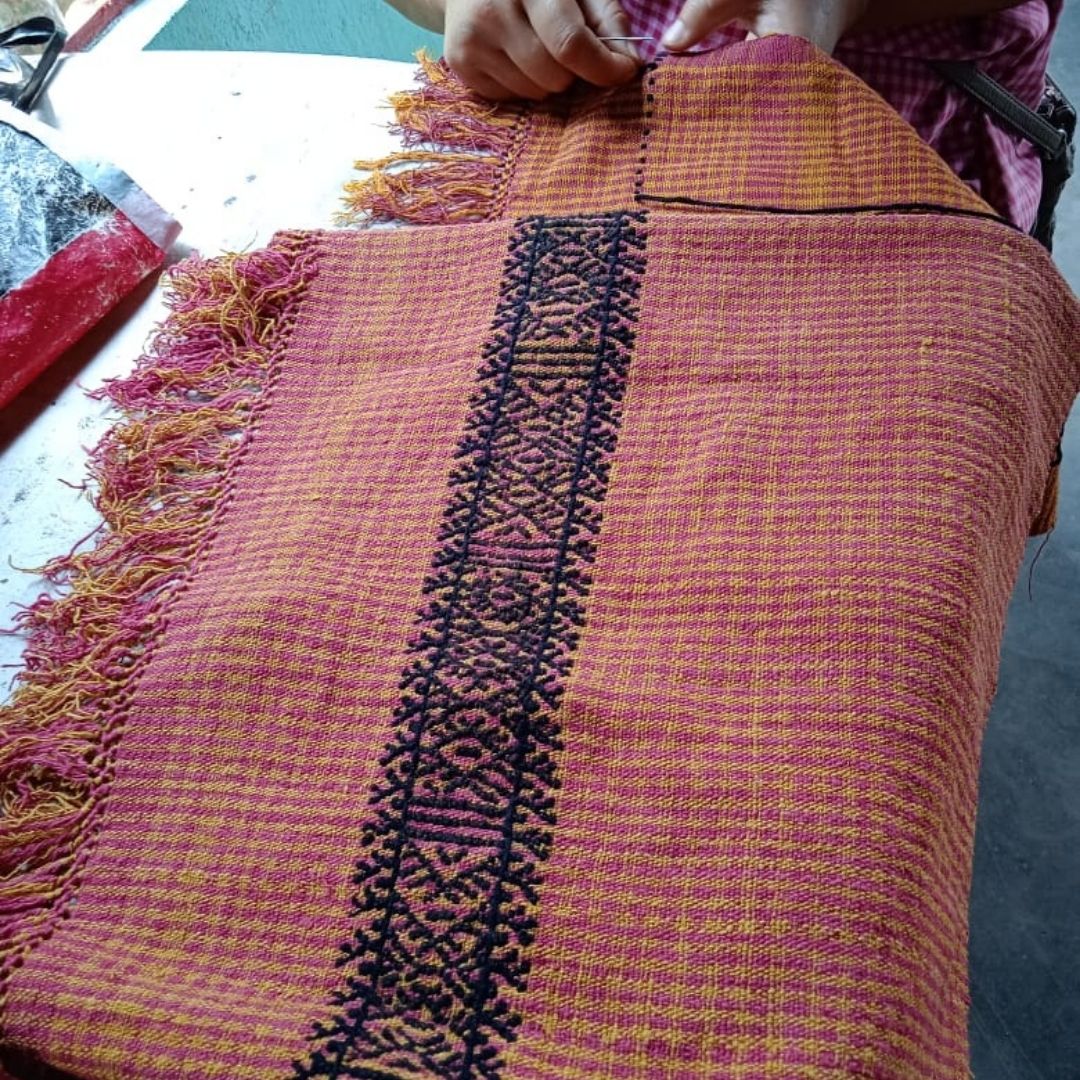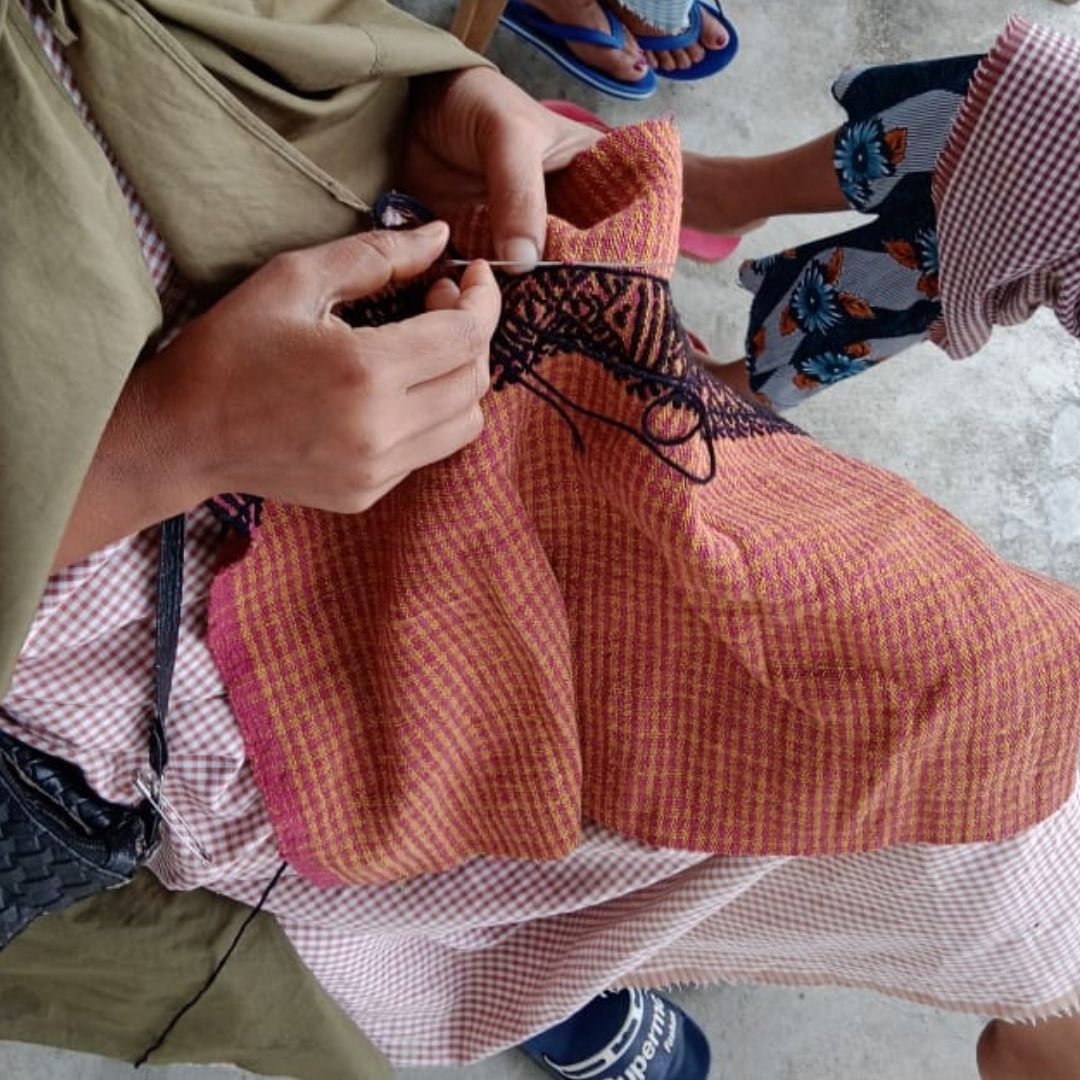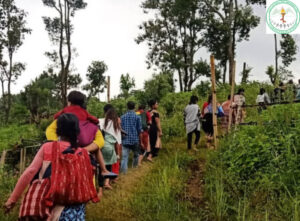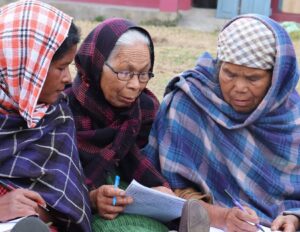The 2nd of March, 2021 observed a stepping stone in the expansion and furtherance of Mei-Ramew weaves in Meghalaya and the importance of having adequate and trained human resources to carry out the same. The NESFAS team ventured into the lush village of Mustoh to commence the training of ten individuals in the age-old artform of Khneng Embroidery by the Khneng Embroidery Society, Kong Victory Synrem and Kong Phaitimul Rimai; for the successful expansion and steady growth of the industry. A business management training session was also conducted by Mr. Syed Izaz Rahman. Aurilia C. Tariang and Lamphrang Shabong from the NESFAS Team were present there to supervise the overall smooth and coherent functioning of the day. The training consisted of both theory and practical which included explanations about thread count, the base fabric used and the pattern of design of the embroidery.
The day commenced with an exhilarating and refreshing welcome speech by Lamphrang Shabong, Field Coordinator, NESFAS, with an explanation of the day’s programme, followed by Aurilia C. Tariang, Field Coordinator, NESFAS, who briefed the attendees on the objectives and execution nitty-gritties of the training programme coupled with the expected accountability of all the trainees as well as the role and responsibility of NESFAS. As the day proceeded, a discussion regarding a foreseeable training programme on the entire Eri Weaving process also took place; the discussion seemed to have kindled a rejuvenated energy among the attendees who showed a keen interest in the same. Some issues were addressed as well; Kong Victory Synrem brought to light the underrated matter of Castor tree infestations which happen to be the primary feed for Eri silkworms.

The enthusiasm from this discussion spilled into the next segment of the day which was headed by Mr. Syed Izaz Rahman (Senior Officer, Training & Process Excellence Myntra) who began his session on the Business Management side of the whole Eri Weaving and Khneng Embroidery Industry. The core tenets of business were elucidated and concepts of customer goodwill and uphill brand reputation were touched upon. Superior quality of products is directly proportional to brand value and a strong support chain. Mr Rahman spoke about how customer feedback is not just important but also a necessary tangent of business in this day and age where the competition is cut-throat and unforgivable.
Through the course of the next nine days, the identification of the base fabric Ryndia for the embroidery was shown to the trainees, the three patterns of embroidery, that is, ‘Khang’, ‘Khneng’ and ‘Treng’ were explained as well as the process of threading the needle and choosing the appropriate length of thread for a single line of embroidery. The embroidering process was shown to the trainees in a step-by-step manner so they learn to embroider line by line instead of rushing through the process.

Khneng Embroidery has a very signature style and hence its beautification is a very important part of the process; after the trainees grasped the basic concept, the beautification was also taught to them. Sometimes, the trainees did face obstacles, as the mastery of this fine art is not an easy journey, but their eagerness and vigour always brought them around and made them even more optimistic to persevere through the training and yield good results.
Khneng Embroidery takes around two days to teach and learn but its mastery takes almost a week. The major difficulties faced by the trainees are less to do with the actual embroidery but more to do with issues like headaches, back pain and eyesight related problems due to the intricate nature of this artwork.
Overall, the trainees were glad to take up this challenge and play a part in keeping their traditional artform alive and in a way also act as a medium to pass it forward to the future.
“Now we do not have to wonder how to stitch the embroidery; we are able to do it ourselves and we will be practicing on a daily basis so that we do not forget it.” shared Donlarity Synrem, a trainee who encapsulated the truth and purpose behind the whole programme.



